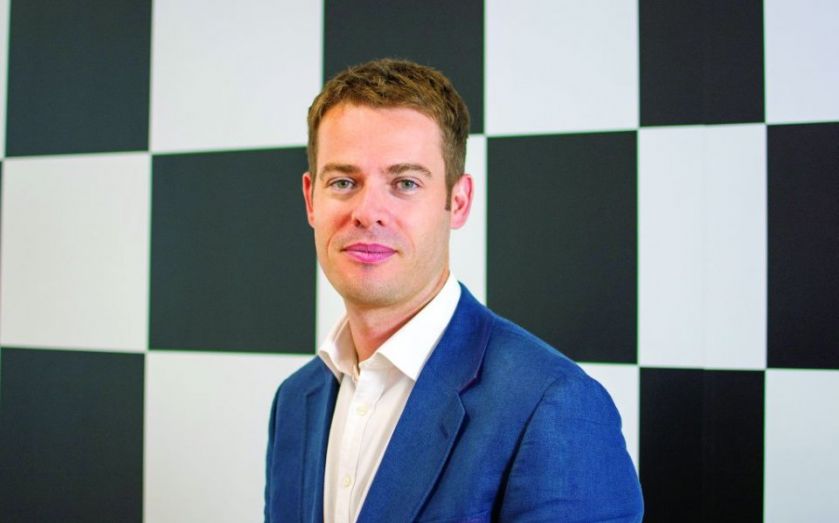| Updated:
WPP agency Mindshare’s UK boss Mark Creighton on wearable technology and collaboration between agencies

It's no secret that the media business is changing irrevocably because of digital technologies. But while some agency execs yearn for the age of bulk media contracts negotiated over a long, boozy lunch with TV bosses, Mindshare’s Mark Creighton comes across as positively electrified by the new digital frontier.
He talks to City A.M. about his company’s focus on research, and why he thinks the future of media demands much closer collaboration with creative agencies.
How is technology re-shaping media agencies’ business models?
Media was once quite a mature and static market, but we’re now in a place, predominantly because of technology, where things change every day.
Media agencies can’t stand still – we have to constantly evolve. Our broad framework is the relationship between data, content and technology. That’s where we start from, rather than the idea of an agency as the intermediary between the media partner and the client. Our job is then to help clients understand that space, and figure out the most effective way of using it.
So the changes are driven by a more complicated media environment?
I don’t like to refer to it as complicated, because that’s where the industry has made its mistake. You’ve got to make sense of the huge volume of opportunities and determine which ones are relevant.
So a lot of the work we’ve done with our Huddle events and the future_medialab is to make sure our clients understand the implications of what’s changing in media. We’ve just completed a huge piece of research on wearable tech and virtual assistants with Goldsmiths, University of London. It’s not necessarily about saying that client X is going to use this specific tech for communications in the next couple of months. But an opportunity will surely emerge from this consumer trend. We’d like to be in a position where we can inform our clients about it. If you don’t do that, the client is going to think you’re not keeping them up to speed.
So the idea of a media agency as just an intermediary is on the way out?
The quality of your strategy, insights and planning will become far more important than trading. You can see through the programmatic developments that trading will actually be informed by these insights.
You’ll go into a real-time exchange and use the data that’s being played back to you to inform what you buy. Your trading comes from an understanding of how what you’re buying relates to the consumers you want to talk to, and how the consumers interact with the advertising. TV will be underpinned by data flowing back from set-top boxes, and outdoor sites could be relaying info back to you via peoples’ mobiles.
It brings us closer to clients’ customer segmentation – which ones are most valuable to them? If we can identify them within media, we can minimise the wastage of clients’ marketing spend. We’ll be able to tangibly demonstrate how media drives the bottom line. We’ve always talked about that, but marrying data with the media execution gets you to quite an exciting place.
How does this shake up your relationship with creative agencies?
Creatives will need to continue to get more tech-literate. The days of saying to a client, “here’s the TV script that defines our approach” are over. Clients ask: “how will it look on a smartphone?” I can see a situation where we have creatives sitting alongside media resources. They’re building campaigns that react to how people interact with ads. The distribution is frictionless now – I can get an ad out in minutes.
It’s not going to be about passing the baton between the creatives, the media agency and the publishers. It could be four or five different entities working together, and thinking every day about what we can do with the media deployment, the creative thought or the PR. It’s hard, because agencies have traditionally been quite closed networks, but opening them up and allowing the cross-fertilisation of skills is something we’re going to have to work on.
You mentioned wearables and virtual assistants earlier. What are the advertising prospects for these new technologies?
Wearables are interesting in the sense that people seem comfortable sharing deeply personal data. It brings into question the view that one day everyone’s going to suddenly realise they’re giving too much information away, or that it’s going to backfire. We need to be open about how we use data, but wearables show that, as long as people are getting a valuable service back, it’s a transaction they’re willing to make.
With virtual assistants, what’s interesting is that the technology is starting to make decisions for us. It could book you a flight, a taxi or do your weekly shop at some point. It means that the virtual assistant is choosing a brand, which is an interesting challenge. How can you make sure that your brand is the one the virtual assistant goes to?
At the moment, it can seem like a bit of a gimmick, but in the past we’ve seen these “gimmicks” turn into something quite fundamental.